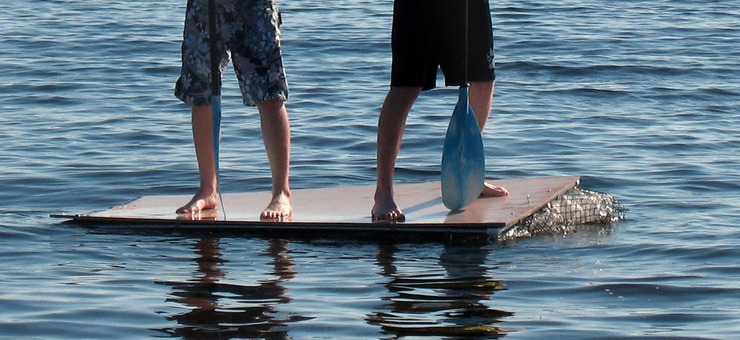Build a raft
Build a small model raft using sticks, string, and tape. Test flotation in a tub, learn buoyancy, teamwork, and problem solving skills.



Step-by-step guide to build a small model raft
How to Make a Raft out of Sticks for Kids
Step 1
Gather all materials and carry them to a table or flat workspace.
Step 2
Decide how big you want your raft to be and pick that number of sticks for the base.
Step 3
Lay the chosen sticks side by side with their ends lined up to make a flat deck.
Step 4
Place two support sticks perpendicular across the top of the base near each end.
Step 5
Cut three lengths of string long enough to wrap around the raft once or twice.
Step 6
Wrap the first string around the raft near one end and tie a tight knot.
Step 7
Wrap the second string around the middle of the raft and tie a tight knot.
Step 8
Wrap the third string near the other end of the raft and tie a tight knot.
Step 9
Press tape over each knot and along the sides to make the raft stronger and more water-resistant.
Step 10
Gently place the raft in the tub of water and watch whether it floats level.
Step 11
Add one coin or washer at a time onto the raft and count how many it holds before it tips or sinks.
Step 12
Make one small change to improve flotation such as moving a stick adding a bit more tape or widening the base.
Step 13
Put the raft back in the tub to test your change and see if it floats better.
Step 14
Share a photo and a short note about your raft and what you learned on DIY.org.
Final steps
You're almost there! Complete all the steps, bring your creation to life, post it, and conquer the challenge!


Help!?
What can I use instead of the craft sticks, support sticks, or string if I can't find them?
You can substitute tongue depressors, chopsticks, or rolled cardboard for the base and support sticks and replace the string with yarn or thin rubber bands while still using tape and the tub for testing.
My raft sinks or tips as soon as I add coins—what should I check or fix?
Check that each knot is tied tight, press more tape over the knots and along the sides, and try widening the base or moving a stick as suggested in the 'Make one small change' step to improve stability.
How can I adapt this activity for different ages or skill levels?
For younger kids use pre-arranged sticks, have an adult tie the strings, and test with fewer or larger washers, while older kids can build bigger rafts, change support stick placement, and count how many coins the raft holds during the coin-testing step.
How can we extend or personalize the raft project after the basic test?
Personalize and improve flotation by painting the sticks before assembly, adding a paper sail taped to a support stick, or attaching small foam pieces under the base and then retesting how many coins it holds in the tub.
Watch videos on how to build a small model raft
STEM Raft Challenge / Lesson Plan
Facts about buoyancy and boatbuilding for kids
🌊 Archimedes' principle says a floating object displaces its own weight in water — that helps you predict whether your raft will float.
🪵 Many woods float because their average density is less than water, so even heavy-looking logs can stay on the surface.
🛶 Rafts are one of humanity's oldest boats — people have been building simple rafts from logs and reeds for thousands of years.
🧪 Sealed air pockets or lightweight materials can massively increase how much weight a small model raft can carry before sinking.
🏝️ The Kon-Tiki expedition in 1947 sailed a balsa-wood raft over 4,300 miles to show ancient peoples could cross oceans.
How do you build a small model raft using sticks, string, and tape?
What materials do I need to build a model raft?
What ages is this raft-building activity suitable for?
What are the benefits of building a model raft?


One subscription, many ways to play and learn.
Only $6.99 after trial. No credit card required


